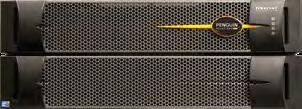
Five Ways System Integrators can Leverage Edge Computing to Maximize Revenue


Five Ways System Integrators can Leverage Edge Computing to Maximize Revenue
Rudy's industrial automation experience began with the Rockwell Automation platform, followed by work with Emerson process automation. He's worked on projects and cutovers for process and discrete deployments designed to help companies improve their profitability.

For more than 15 years, DoShik has focused on the integration of industrial software and software automation. His primary interests are exploring practical use cases and getting a better understanding of how organizations can achieve digital transformation.


Edge computing is rapidly gaining traction in industrial systems, with edge-enabled platforms expected to have a 35.1% CAGR over the next eight years. By moving resource-heavy operations closer to production facilities, businesses can boost efficiency, speed time to actionable insights, and mitigate risks—all key drivers for digital transformation and the shift to Industry 4.0.
For system integrators (SIs), edge computing unlocks opportunities for delivering value, enhancing automation, and supporting software-defined innovation. This eBook covers the essentials of edge computing, explores how SIs can use edge computing to maximize revenue and provides real-world examples that highlight what makes edge computing truly effective.




Edge computing refers broadly to computing that occurs outside the data center and close to critical equipment and processes where data is generated. This data can then be sent to a control room, operations center, data center, or cloud location for further analysis and management.
Edge connectivity to a centralized cloud or data center is especially important for data-intensive enterprise applications but is often hindered by limited connectivity. Edge computing resources address data latency and bandwidth limitations by providing local processing power to maximizes the value of your real-time data.
Edge computing platforms that are purpose-built for operations can also bring intelligence to legacy equipment, assets, and processes. These platforms collect and process data from remote assets and provide a data scaffold capable of anchoring your organization’s data management strategy.
Organizations can derive insights from analytics processed on edge computing platforms and then share data collected via this distributed computing model to the cloud or centralized networks at predetermined intervals to increase enterprise visibility and facilitate deeper analysis.

Manufacturing equipment, for example, continuously generates data ranging from quality metrics to parts completed to operational status. Sending this information to a central server or the cloud isn't always fast enough for teams to get real-time insights and take immediate action. Edge computing platforms bring data storage and compute capabilities closer to the equipment and processes that generate data, thereby reducing the amount of time and effort needed to transform data into actionable insights.













Computing at the edge offers several benefits for SIs and industrial organizations, including:
Automating core business processes
Enhancing operational efficiency
Ensuring continuous availability
Reducing data network latency

during operation and addressing any errors that arise. There's no time for improving process efficiency, which can boost productivity and reduce waste.
Edge computing solutions allow companies to move key processes into digital spaces that are physically near or adjacent to production equipment. These advanced computing platforms can be configured to ingest and process data automatically and notify staff should any issues arise. Offloading key data collection tasks to edge computing solutions also cuts down on time spent on manual data entry and retrieval.
production goals, which increases the risk of revenue loss and reputational damage.
To take another example, the production of life sciences products is a multi-step process that requires ongoing evaluation of operations against safety, compliance, and regulatory standards. In this world, the sooner any potential issues are detected, the better. Any unplanned downtime or data loss can disrupt operations, which can in turn require time-consuming documentation and restart procedures and increase business costs.
Implementing data processing and analytics at the edge provides on-demand operations feedback so that potential problems are identified as early as possible. With advanced computing power at the edge, data can produce insights in real-time, making it easier for companies to take action.

bottom line and to a company’s brand reputation.
Downtime can occur for different reasons. Unexpected server failures can create issues accessing local stacks. Connectivity issues can impede access to the cloud, which can in turn cause key processes to fail. Depending on the situation, it can take hours or even days to bring operations back online and carry out any required pretesting before production can resume.
Modern edge computing platforms combine built-in fault tolerance, supportability, and manageability to ensure that mission-critical applications can run without unplanned downtime. Some, including Penguin Solutions® Stratus ztC Endurance, offer up to 99.99999% uptime. In addition, edge computing capabilities also support the reliable collection, organization, and processing of data from operations.
time-consuming.
Edge computing platforms by contrast are part of local networks, which gives information technology (IT) and operational technology (OT) teams control over how and where data is processed, handled, stored, and distributed in the organization.

End users turn to SIs to ensure that services and software work together effectively and to maximize revenue by improving operational efficiency.
The first goal requires expertise and experience. SIs use their knowledge of business operations and industry best practices to help enterprises select tools and technologies that will streamline operations and processes.
The second goal involves understanding how edge computing can be deployed to increase efficiencies, reduce costs, and boost productivity.
While strategies will vary from one deployment to the next, edge computing can help enterprises boost revenue in five ways: modernization projects, moving from technology refresh to value-added engineering, deploying innovative applications in the OT/IT stack, increasing project management efficiency, and enabling greater profitability.


Regular technology upgrades and refreshes are common tasks for SIs. With edge computing, system integrators can go one step further by transitioning enterprises to a value-added engineering model.


and data loss, boost performance, and unify disparate infrastructure deployments.
Case study snapshot
QuarterNorth Energy is a leading oil and gas producer that operates deep-water, shallow, and shelf assets in the Gulf of Mexico. The company needed to modernize infrastructure and process control technology on its Bullwinkle oil platform in order to improve safety and responsiveness, eliminate costly downtime, and boost operational performance.
QuarterNorth Energy turned to Enginuity Global, a system integrator with expertise in process automation, control, and field services. In just 45 days, Enginuity upgraded all PLC panels on the Bullwinkle oil platform and deployed a single fault-tolerant Stratus ftServer computing platform to centralize operations and enable separate process control and safety shutdown systems.
The Stratus ftServer is a tank. It offers a simplistic approach to a complex system. Part of our motto at Enginuity is ‘We simplify a complex world.’ And so, Stratus servers definitely help reduce some of that complexity. And, we were able to save a substantial amount of money using them.


2. Shifting from technology refresh to value-added engineering

Regular technology upgrades and refreshes are common tasks for SIs. With edge computing, system integrators can go one step further by transitioning enterprises to a value-added engineering model.

Traditionally, the window for value-added engineering has been quite small—often two years or less, depending on the technology. By expanding this engineering "sweet spot," companies can reduce their technology refresh costs and improve their bottom line.
Traditionally, engineering or expanding this engineering "sweet spot," companies can reduce their technology refresh costs and improve their bottom line.
With edge platforms in place, organizations can focus on optimizing processes instead of starting to plan the next refresh immediately after installing new technology. operations to find additional optimization opportunities.
With edge organizations focus to plan installing analyze existing operations to find additional optimization opportunities.
3. Deploying innovative applications in the OT/IT stack

With operational application volumes increasing by the day, edge computing platforms make it possible to leverage new solutions without sacrificing performance.
The state of emerging applications
Nowadays there are applications for almost everything. Some are process-specific. Others are more general. Some are purpose-built for a particular organization. Others are open-source. No matter the form and function of an application, companies are inundated with options. Unfortunately, this situation tends to lead enterprises to over-commit and over-deploy, straining local systems that were not designed for this increased workload.
The role of edge computing in application integration
Edge computing enables companies deploy applications wherever and whenever, without overwhelming local legacy servers or getting too far from data sources. By offloading applications to the edge, businesses can free up in-house resources and have room to spare.
Moving applications to the edge offers significant revenue advantages. Using virtualization, companies can consolidate IT and OT workloads—including cybersecurity, HMI, SCADA, manufacturing execution system (MES), and more—on a single platform. This streamlines operations, reduces interruptions, and lowers costs by reducing the need for multiple platforms. Applications at the edge experience fewer process interruptions and typically consume less energy. Edge-based applications can also proactively detect operational issues, reducing risks and giving organizations increased visibility into their operations.
Case study snapshot
After TSA and DOT updated cybersecurity requirements for pipeli and operators, a large U.S. Midstream oil and gas company decided to explore new platform options. They selected the Stratus ztC Edge comput as the foundation for both IT and OT, enabling seamless collabo the two teams.
By consolidating workloads and applications onto one platform, the company achieved significant cost savings. IT teams could run virtualization, network functions, and cybersecurity tools at the network edge while OT deployed SCADA, Historian, and data collection applications. Fewer devices needed and a reduction in potential points of failure further lowered deployment costs.

Penguin Solutions fault-tolerant computing platforms were foundational in helping this oil and gas company meet new cyber mandates, conso OT workloads, and reduce total cost of ownership (TCO). With improved communications and data management and fewer organizational siloes, staff were able to scale deployments across multiple locations with ease.


4. Increasing project management efficiency
Improved efficiency means more revenue. Moving processes to the edge makes this possible.
The edge simplifies and derisks project management by making processes fully visible and easier to optimize. Complex, limited-visibility operations that require constant IT and OT oversight become more efficient when edge systems can provide real-time clarity. This visibility reduces risk by helping SIs detect and resolve security issues quickly, ensuring applications stay connected and secure.
Edge computing streamlines operations to boost efficiency and ensure peak performance. Front-end engineering design (FEED) benefits from workload consolidation and more accurate estimates. Factory acceptance testing (FAT) gets more cost-effective hosting and simplified revisions. Cutover efforts require less hardware and fewer failover tests. Taken together, these efficiencies can accelerate project success and ROI.
Enhanced project management at the edge reduces downtime so that costs stay on track and revenue grows. Delivering projects on time or ahead of schedule reduces stalled production and creates opportunities for consistent operational performance.
Edge computing strengthens IT and OT security by keeping workloads under local control to reduce the risks associated with cloud-based operations. With edge systems, integrators maintain visibility and oversight, making it easier to detect and address security concerns without needing to rely on external resources.
Case study snapshot
A leading life sciences manufacturer of cell biology and DNA, RNA, and protein analysis products needed to eliminate downtime and data loss to ensure regulatory compliance and avoid costly disruptions.
Over the course of one week, RoviSys, a global SI specializing in automation, deployed Penguin Solutions® edge computing platforms running Rockwell Automation PlantPAx® at three of the firm’s production facilities. These new production control architectures provided fault tolerance, simplified validation, converged OT and IT, and reduced TCO by 15-20% compared to a cluster solution. The life sciences company has experienced no unplanned downtime since going live and its engineers have been able to service the platforms without additional dedicated IT support.
With Penguin Solutions longevity and durability, and streamlined FAT/SAT verification, our customer has a top-performing, high-availability solution for the long haul.


Edge computing can reduce costs related to:
• Hardware platforms
• Software and updates
• Outcome-based deliverables
Integrators deliver built-in support models with remote diagnostics and hot-swappable replacements, enabling rapid issue resolution and enhancing system reliability. These features ensure longer hardware lifecycles and less downtime keeping operations running smoothly.
Virtualization on edge computing platforms consolidates critical workloads like monitoring and control. This reduces hardware needs and costs. Edge systems also support digital twin testing processes, reducing dependence on physical systems while optimizing production workflows.
Edge computing platforms allow SIs to package deployments as software and service products, which means they can sell outcomes rather than specific integrations. Proactive health monitoring and long-term serviceability make these solutions sustainable revenue drivers for SIs.

Not all edge computing platforms are created equal.
Part of the challenge is that there's no clear definition of what constitutes the digital “edge” of an organization. There is general consensus that “edge” refers to locations that exist just beyond the physical and digital borders of an enterprise, but different industries and even organizations within the same industry may define the term differently.
No matter how your business defines “edge,” an effective edge platform needs these three core elements:
Continuous availability to guard against downtime and data loss
Operational simplicity means OT staff spend less time getting w running and fewer resources are needed to manage these workloads at scale
Automated health monitoring and hot-swappable components keep processes running smoothly and enable SIs to make critical changes on-demand


of function, industrial options can better withstand the rigors of production environments such as high temperatures and continual processing loads. for organizations to customize solutions to meet current and emerging needs.
Global support and regular system upgrades also play a role in enabling autonomous operations. Edge platform providers that deliver end-to-end support from initial device selection to integration to post-deployment assistance ensure that you benefit from expert advice every step of the way.
For industrial organizations that want to improve productivity, reduce downtime, and maximize revenue, edge computing is a must.
Penguin Solutions provides edge computing solutions that help companies smoothly transition from existing deployments to next-generation solutions.
Our future-proof platforms include:

Stratus ztC Endurance is Penguin Solutions new family of fault-tolerant computing platforms designed specifically for edge and data center workloads. This new platform delivers 99.99999% uptime, with built-in fault tolerance, proactive health monitoring, and unmatched serviceability to enable intelligent predictive failover.


Stratus ztC Edge is a secure, highly automated edge computing platform with built-in virtualization and fault tolerance that can run critical applications with no downtime or data loss. With Stratus ztC Edge, OT and IT teams can rapidly modernize and scale edge infrastructure to turn data into actionable insights.

Stratus ftServer is a computing platform uniquely engineered to run mission-critical applications in the data center, control room, or an edge location without downtime or data loss. Using Stratus ftServer, organizations can rapidly modernize IT infrastructure to maximize reliability, simplify manageability, and future-proof computing infrastructure with minimal risk.

With over two decades of experience as trusted advisors to our valued customers, Penguin Solutions is an end-to-end solutions provider helping solve complex challenges in computing, memory, and LED solutions.
Penguin Solutions designs, builds, deploys, and manages high-performance, high-availability enterprise solutions, allowing customers to achieve breakthrough innovations.
Our Stratus high availability and fault tolerant computing platforms ensure the continuous availability of our customers’ critical applications and data in remote data centers and edge locations.
For more information, visit www.penguinsolutions.com